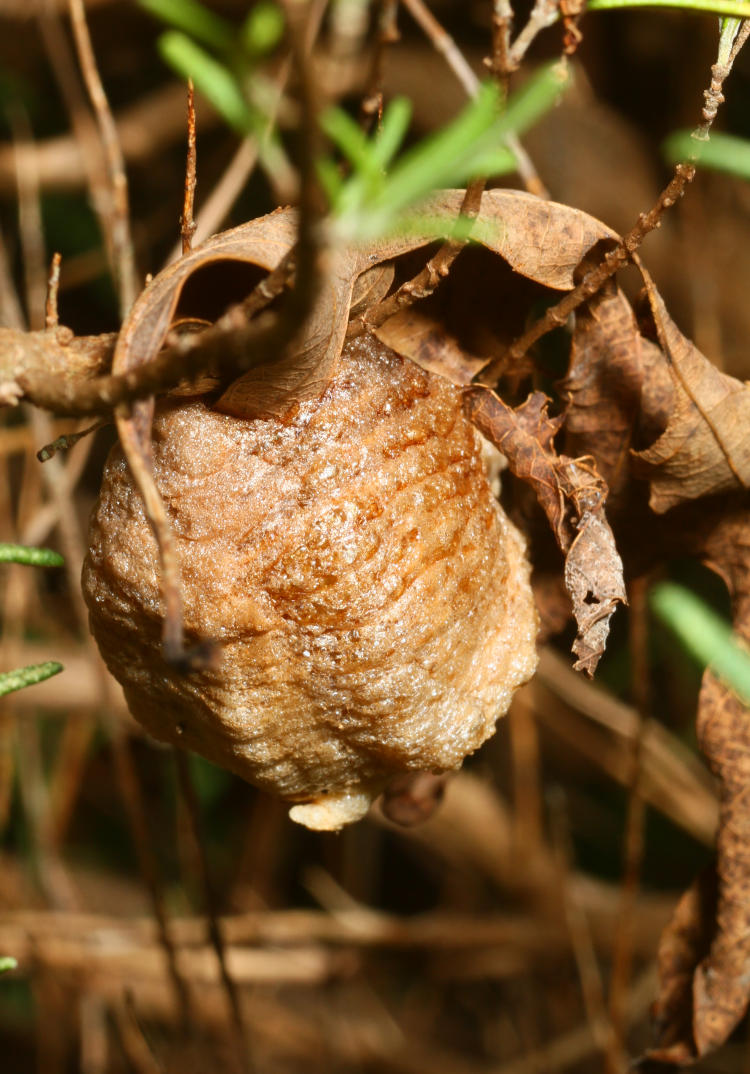I’m still playing with the Chinese mantids (Tenodera sinensis,) and you’re tired of hearing about my attempts to obtain certain photos of them (aren’t you?,) specifically laying eggs, or producing the ootheca/egg sac – I’m honestly not sure these can be differentiated, because I only have one set of photos of it and they’re not that clear, plus I was too late to see the actual egg laying if it does indeed take place. What I think happens is that the mantis lays the eggs tight against the branch used as the support, then as a separate act covers them with the foamy stuff that hardens into the protective sac – think egg carton styrofoam or that expanding foam insulation. However, it’s possible that the eggs and foam are extruded together. I’d really like to catch this start to finish to see for sure, and I keep my eyes open for the opportunities.
One obviously rotund female was inhabiting the largest rosemary bush for weeks, and I was trying to keep an eye on her. But then she disappeared, and after a few days I mounted a search of the plant. Eventually, my suspicions were confirmed.

There it was, hidden well down into the depths of the plant (which is really a sprawling bush now.) Moreover you can see that she, accidentally or intentionally, incorporated a dead leaf into the foam, and my typical view was from above and so the ootheca is completely hidden from casual sight. it also sits low to the ground and aimed ‘down,’ not the typical angle that I see them in, so photographing this come spring is going to be challenging, unless I prop it up or shift it to a slightly better location.
This is the same bush that hosted the first hatchings this past spring, and I’ve said before that I have a vague suspicion that they return to their hatching spot, so it remains a possibility that I photographed her as a newborn, maybe even rescued her from being trapped – granted, that’s about a 1-in-300 chance or less even if she was one of that brood. But at the least, I have an ootheca to keep an eye on next year, and will probably attempt to collect a few more early in the winter.



















































